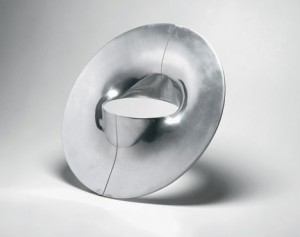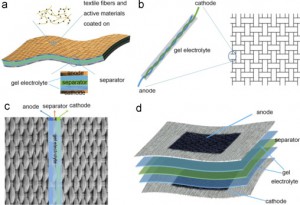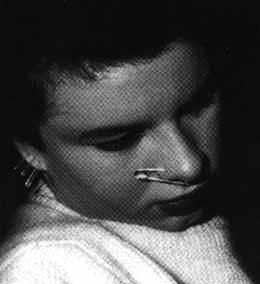Looking at Gijs Bakker‘s neckpiece in the stedelijk BASE exhibition directed me to an intriguing subject: (neo-)futurism. Working together with Emmy van Leersum Gijs Bakker was aiming to make jewellery less frumpish. By making big statement pieces they made jewellery less of a status symbol and more of an accessory to fashion. This was a totally new approach. Jewellery and fashion had not been connected in such a manner before. They were also very futuristic in choice of materials. They chose materials like aluminum, again breaking with the crafty connotation jewellery had, and with the jewellery as a status symbol since the material was cheap and easily produced, making it available to the masses. Them revolutionizing jewellery made me wonder what a new form of futurism could be, in what ways we could reinvent jewellery nowadays. A huge amount of sub questions arose that I believe should all be looked into when trying to reinvent jewellery. Here I name a few. Could contemporary jewellery serve a social function? How could we reinvent the material (I believe this was vital in the futurism of Gijs Bakker’s jewellery)? How could we bring it to the masses? In this tiny research I only slightly touch the surface of these complicated matters.

Material future
When it comes to innovating material a lot of exciting things are happening. We are living in a time of rapid development of technology. New findings could be integrated into contemporary jewellery design. Renewing the world and meaning of jewellery altogether. Structurally changing the current function of jewellery or enriching it by adding an interactive aspect. In contemporary jewellery many materials are being used. Such as fabrics, when we look at fabric a lot of exploration of means of energy storage is taking place. To get an interactive piece an energy storage is vital. Researchers are doing a lot of research in finding ways to make fabrics store energy without losing wearability. Think for instance of yarn batteries, sources of energy being 1D-yarns that are woven to construct the fabric. Imagine the possibilities! The technical aspect is quite intricate but if you are interested there are multiple articles available online. Overall there are still many problems with washability and there are safety issues but it seems to me like an inspiring look into the future.
in example b you can see the so-called 1D-yarn
Social participation
Can we start to discuss questions in modern day society through the medium of contemporary jewellery? I found some interesting insights in an essay written by Rebecka Huusko-Källman. Jewellery can be seen as very mobile as it is made to be carried by our bodies, therefore it can be considered a great medium for conveying a message in all kinds of environments. As you leave your house the jewellery does too. 'Moving around in social contexts, jewellery operates between the personal and public space, it has a unique ability to interact with the viewer.' (den Besten, 2012) However Liesbeth den Besten also states that contemporary jewellery -making statements or titillating to the point of discussion- often only moves around in small circles. The mass does not have the access and/or does not seem as interested in these kinds of contemporary wearable objects. Another issue is the fact that the contemporary jewellery being displayed in galleries can make it seem like merely a commodity and thus not a subject of reflection or discussion. Whereas on the other hand displaying the pieces in museums can separate the viewer from them, through its significant context it’s isolated. Lastly, the masses often fail to read the meaning of the works, the ‘language’ through material and form seems remote and inaccessible to people who have not been initiated into this specific field.
Economics
To get messages across or start a conversation one might consider the commercial side of it all. The jewellery industry is growing rapidly (according to ‘A multifaceted future: The jewelry industry in 2020’ written by Linda Dauriz, Nathalie Remy and Thomas Tochtermann) it is expected to grow 5 to 6 percent a year. They state that the trends that formed the apparel industry the last thirty years are starting to show in the jewellery industry. These trends being: internationalization and consolidation, the growth of branded products, a reconfigured channel landscape, ‘hybrid’ consumption, and fast fashion. From these findings we could conclude a couple of ways of getting into the public eye. First of all branding is on the rise so really strengthening a brand or producing via a brand can make reaching the public easier.Secondly using the online platform is important. The article says: 'According to a recent McKinsey survey, two-thirds of luxury shoppers say they engage in online research prior to an in-store purchase; one- to two-thirds say they frequently turn to social media for information and advice.' Thirdly there is a supposed ‘hybrid’ consumption which means consumers either buy more quality orientated ‘fine’ jewellery or the cheaper ‘fashion’ jewellery. The article recommends the following: ‘Fine jewellers might consider introducing new product lines at affordable prices to entice younger or less affluent consumers, giving them an entry point into the brand. Fine-jewellery players could decide to play exclusively in the high end and communicate that message strongly through its advertising, in-store experience, and customer service.'

